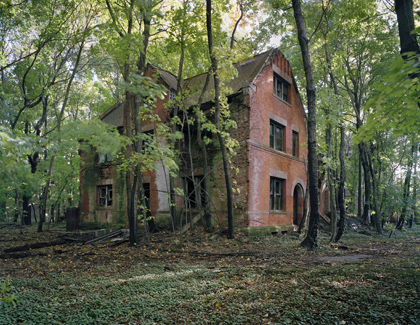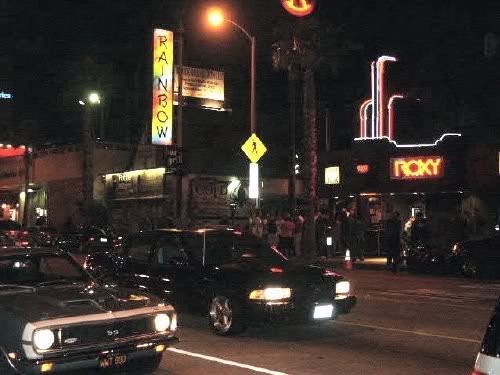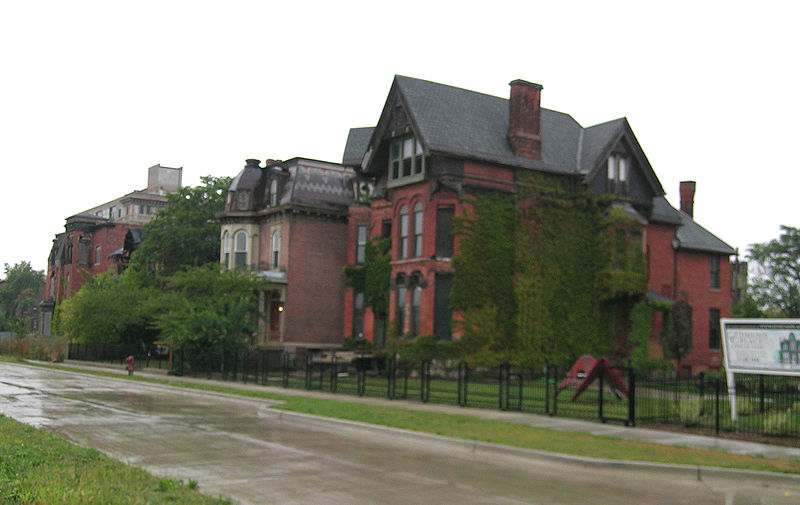

Historical Tales | News | Vampires | Zombies | Werewolves
Virtual Academy | Weapons | Links | Forum
 |
 |
Historical Tales | News | Vampires | Zombies | Werewolves Virtual Academy | Weapons | Links | Forum |
Return to Vampires Versus Zombies
DISCLAIMER: This site is not responsible for anything that might happen if you visit these locations. If you must, do not travel unarmed and do not travel alone.
 |
| A derelict of the island |
The island has housed various facilities over the years, including a hospital and a drug rehabilitation center. Typhoid Mary, a cook who spread typhoid fever to more than 50 people in New York City, was quarantined here from 1915 until her death in 1938. The island has been abandoned since the 1960s.
In 1974, the FVZA dispersed a pack of vampires that was using the city's subway tunnels to attack people. Three of the pack members commandeered a boat and escaped on the East River. The boat was discovered the next day floating near North Brother Island. There was speculation that the vamps had taken shelter on the island, but by then the FVZA was in its last days and no raid ever took place.
North Brother Island features a number of large, abandoned structures, which make it a perfect spot for a vampire pack looking to lay low until conditions improve. And if those vampires should desire to start hunting again, the large populations of Manhattan, Brooklyn and the Bronx are only a short boat ride away.
Urban explorers have reported seeing signs of habitation on the island. If the FVZA is ever reconstituted, this is one of the first places they should sweep.
 |
Vampires found lots to love about the Strip, especially after rock and roll venues like the Whiskey a Go-Go, the Rainbow Bar and Grill, and The Roxy arrived in the 1960s and 70s. There was a steady supply of fresh blood among the would-be musicians and groupies, many of whom were runaways from other parts of the country. The nocturnal life of rock and rollers was perfect for a vampire's schedule. And the vampires' gaunt physiques, pale skin and sunglasses fit right in with L.A.'s nightcrawlers. The story of Wanda Schiffler is but one prominent example of the convergence of rock and roll and vampirism along Sunset Boulevard.
Besides plenty of fresh blood, Hollywood supplied vampires with an assortment of moneyed individuals willing to provide them with shelter in return for a promise of immortality. Clever vampires wormed their way into the inner circles of potential "sponsors"—wealthy, aging individuals with mansions and hedonistic lifestyles. European and Arab heirs and heiresses were a favorite target.
Even vampires who didn't find sponsors had plenty of places to hide in the Los Angeles basin. They squatted in unoccupied mansions, holed up in corners of vast warehouses, and even set up shop in tunnels left over by the Pacific Electric Railway.
Today's atmosphere of vampire glorification creates a fertile environment for a rebirth of the undead along Sunset Strip.
 |
It's not certain exactly when vampires began inhabiting New Orleans' cemeteries, but they certainly were a presence in the city proper from its earliest days. The FVZA office in New Orleans was always one of the busiest in the nation. In 1957, an FVZA surveillance team came upon a pack of vampires attacking a tourist in the city's popular French Quarter. Agents pursued the vampires into St. Louis Cemetery #1, but lost them among the crypts and narrow alleyways.
The next day, agents conducted a sweep of the cemetery and found the enterprising pack holed up in one of the larger crypts. The agents destroyed the pack, and then located and destroyed two other packs in the cemetery.
Unfortunately, the assault, which damaged several crypts and memorials, prompted an outcry from the public, and city leaders decided to enact an ordinance prohibiting the FVZA from conducting operations inside cemeteries.
It's quite possible—likely, even—that vampires have been using New Orleans' cemeteries as a base for nightly excursions to the French Quarter, where they are sure to find plenty of drunken tourists stumbling about. Consequently, New Orleans is unlikely to lose its reputation as the Vampire Capital of America anytime soon.
 |
| The ceiling of a secret vampire lair |
The caves also had a darker role in St. Louis' history: as hiding places for vampires.
Vampires began using the caves in the 18th century during the early days of French settlement. Over time, the bloodsuckers created comfortable underground dwellings, with well-protected entrances and sentries to provide ample warning in case anyone approached. At night, they would leave the caves via hidden exits near the river and hunt for blood in busy areas of the city like Laclede's Landing and Lafayette Square.
The FVZA conducted missions into the caves throughout the 20th century. It was difficult, dangerous work, as the vampire packs often booby-trapped cave entrances. During one mission in 1956, four agents were killed when vampires triggered an explosion in a narrow passageway. In the aftermath of the disaster, the Agency decided to scale back operations inside the caves and instead focus on trying to restrict the movements of the vampires: engineers sealed off cave entrances, and FVZA shadows conducted nighttime undercover operations in popular vampire hunting areas.
Reports of vampire attacks in St. Louis dropped through the 1960s and 70s. However, it's probable that many vampires hiding out in the caves had entered a dormant phase during that time. Now, with no FVZA in the way, they're very likely to be on the verge of recommencing their activities.
 |
|
Brush Park, Detroit Photo: Andrew Jameson |
Detroit's downtown area has long had its share of vampires, but the area really became active in the 1970s when the automotive industry fell into decline with the Arab oil embargo and the rise of the Japanese carmakers. Vampires were able to prey upon the homeless during the nighttime hours and then hide away during the day in one of the many abandoned homes in the city's once-grand Brush Park area. The feeding opportunities were so plentiful that some vampire packs became sloppy: in 1973, FVZA agents broke into the basement of a Brush Park home and encountered the hellish sight of dozens of drained and dismembered corpses heaped in the corner.
When the FVZA was disbanded in 1975, Detroit was at the top of the list for likely outbreak locations in the United States.
The economic situation in Detroit has deteriorated further in the ensuing decades, and economic hardships always raise the risk of a vampirism outbreak, since vampires can prey on the homeless for years without being noticed. In addition, Detroit's downtown area is home to a number of commercial buildings that are abandoned or rarely used and could serve as a base for vampiric operations.